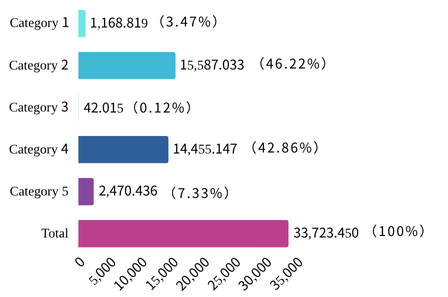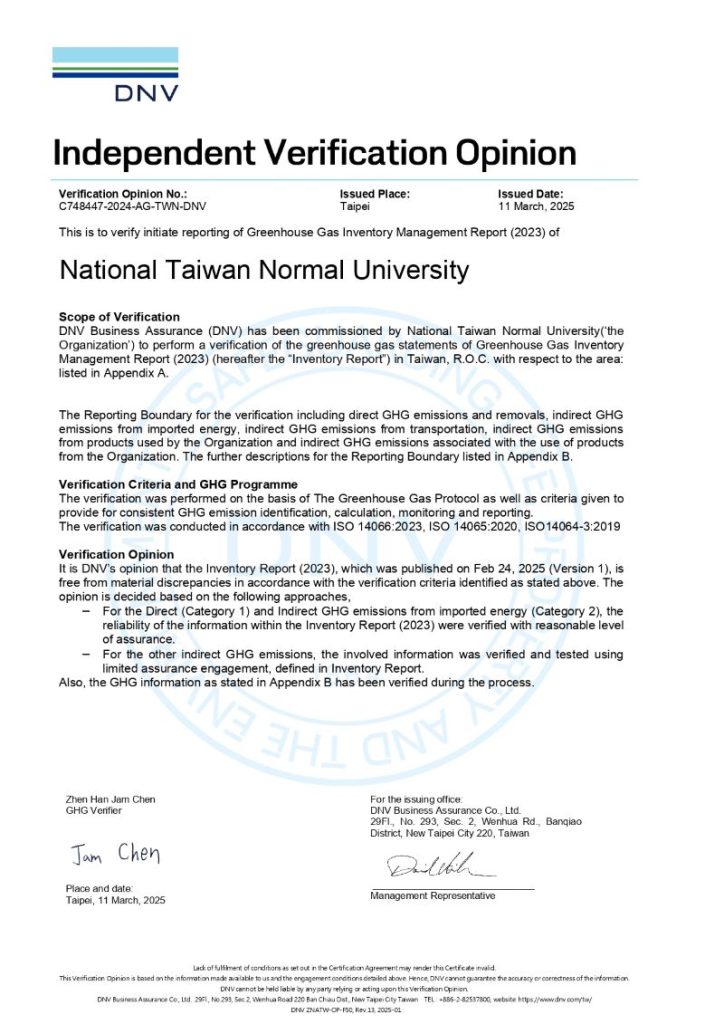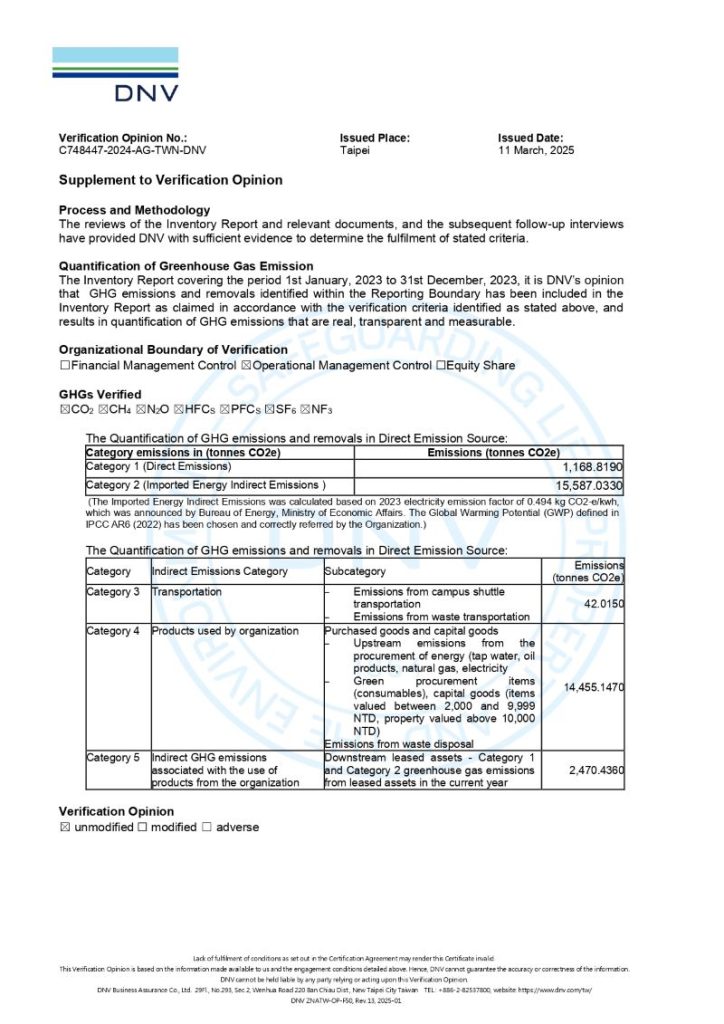NTNU Carbon Neutral Claim
National Taiwan Normal University (NTNU) recognizes that a university has to play an essential role in the evolution of human civilization and promises to be carbon-neutral by 2048 in response to Taiwan's 2050 Zero Emission policy and UN 2030 Agenda – Sustainable Development Goals (SDGs). In addition to continuing to cultivate talents and develop research, the university will fulfill social responsibilities and increase impacts. NTNU aims to reduce carbon emissions by 50% by 2030 and achieve complete carbon neutrality by 2048 through net-zero green life, energy efficiency, low-carbon emission electricity, and green energy.
Greenhouse Gas Inventory
Origin
In response to global climate change and Taiwan’s 2050 net-zero policy, NTNU aims to reduce carbon emissions 50% by 2030 and achieve complete carbon neutrality by 2048. To support this goal, NTNU established the Greenhouse Gas Inventory Task Force in October 2024 to lead campus-wide emissions tracking.

Inventory Target
Following the international standard ISO 14064-1:2018, NTNU conducts greenhouse gas inventories to identify campus emission sources and volumes, and forms carbon neutrality strategies.

Inventory Result
From October 2024 to March 2025, NTNU conducted its 2023 greenhouse gas inventory, covering all four campuses and affiliated properties. The inventory, carried out with the support of various university units, was verified by DNV in March 2025.
Emissions were reported across Categories 1 to 5 under ISO 14064-1:2018, totaling 33,723.450 tons CO2e. Categories 1 and 2 accounted for 16,755.852 tons CO2e, representing 49.69% of total emissions.

Future Outlook
NTNU continues its annual greenhouse gas inventories to monitor emission trends and develop effective carbon neutrality strategies. By integrating teaching and research resources, the university fosters green talent and collaborates with faculty and students to build a low-carbon future.

2023 NTNU Greenhouse Gas Emissions

-
Category 1: Direct Emissions
-
Category 2: Imported Energy Indirect Emissions
-
Category 3: Transportation
-
Category 4: Products used by organization
-
Category 5: Indirect GHG emissions associated with the use of products from the organization
2023 NTNU
Independent Verification Opinion




